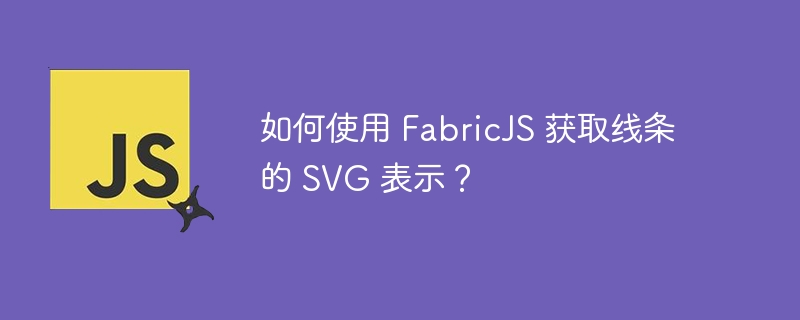

In this article, we will learn how to get the SVG representation of a Line using FabricJS. Line element is one of the basic elements provided in FabricJS. It is used to create straight lines. Since line elements are geometrically one-dimensional and contain no interiors, they are never filled. We can create a line object by creating an instance of fabric.Line, specifying the x and y coordinates of the line and adding it to the canvas. To get the SVG representation of a Line object, we use the _toSVG method.
_toSVG(): Array
Let’s look at a code example to see how to use The output logged when using the _toSVG method is not used. The _toSVG method returns a string array containing the specific svg representation of the instance. However, since we are not using the _toSVG method, we will not be able to see the string array in the console. The default values for Line objects are documented to illustrate this point.
<!DOCTYPE html>
<html>
<head>
<!-- Adding the Fabric JS Library-->
<script src="https://cdnjs.cloudflare.com/ajax/libs/fabric.js/510/fabric.min.js"></script>
</head>
<body>
<h2>Without using _toSVG method</h2>
<p>You can open console from dev tools and see the logged output</p>
<canvas id="canvas"></canvas>
<script>
// Initiate a canvas instance
var canvas = new fabric.Canvas("canvas");
canvas.setWidth(document.body.scrollWidth);
canvas.setHeight(250);
// Initiate a Line object
var line = new fabric.Line([70, 100, 150, 200], {
stroke: "blue",
});
// Add it to the canvas
canvas.add(line);
// Console logging the Line object
console.log("The Line object is as follows: ", line);
</script>
</body>
</html>
In this example, we use the _toSVG method to get a string array containing the svg representation of the object.
<!DOCTYPE html>
<html>
<head>
<!-- Adding the Fabric JS Library-->
<script src="https://cdnjs.cloudflare.com/ajax/libs/fabric.js/510/fabric.min.js"></script>
</head>
<body>
<h2>Using the _toSVG method</h2>
<p>
You can open console from dev tools and see that the logged output contains an array of strings containing the svg representation of the Line object
</p>
<canvas id="canvas"></canvas>
<script>
// Initiate a canvas instance
var canvas = new fabric.Canvas("canvas");
canvas.setWidth(document.body.scrollWidth);
canvas.setHeight(250);
// Initiate a Line object
var line = new fabric.Line([70, 100, 150, 200], {
stroke: "blue",
});
// Add it to the canvas
canvas.add(line);
// Using the _toSVG method
console.log(
"The svg representation of the Line object is as follows: ",
line._toSVG()
);
</script>
</body>
</html>
The above is the detailed content of How to get an SVG representation of a line using FabricJS?. For more information, please follow other related articles on the PHP Chinese website!




